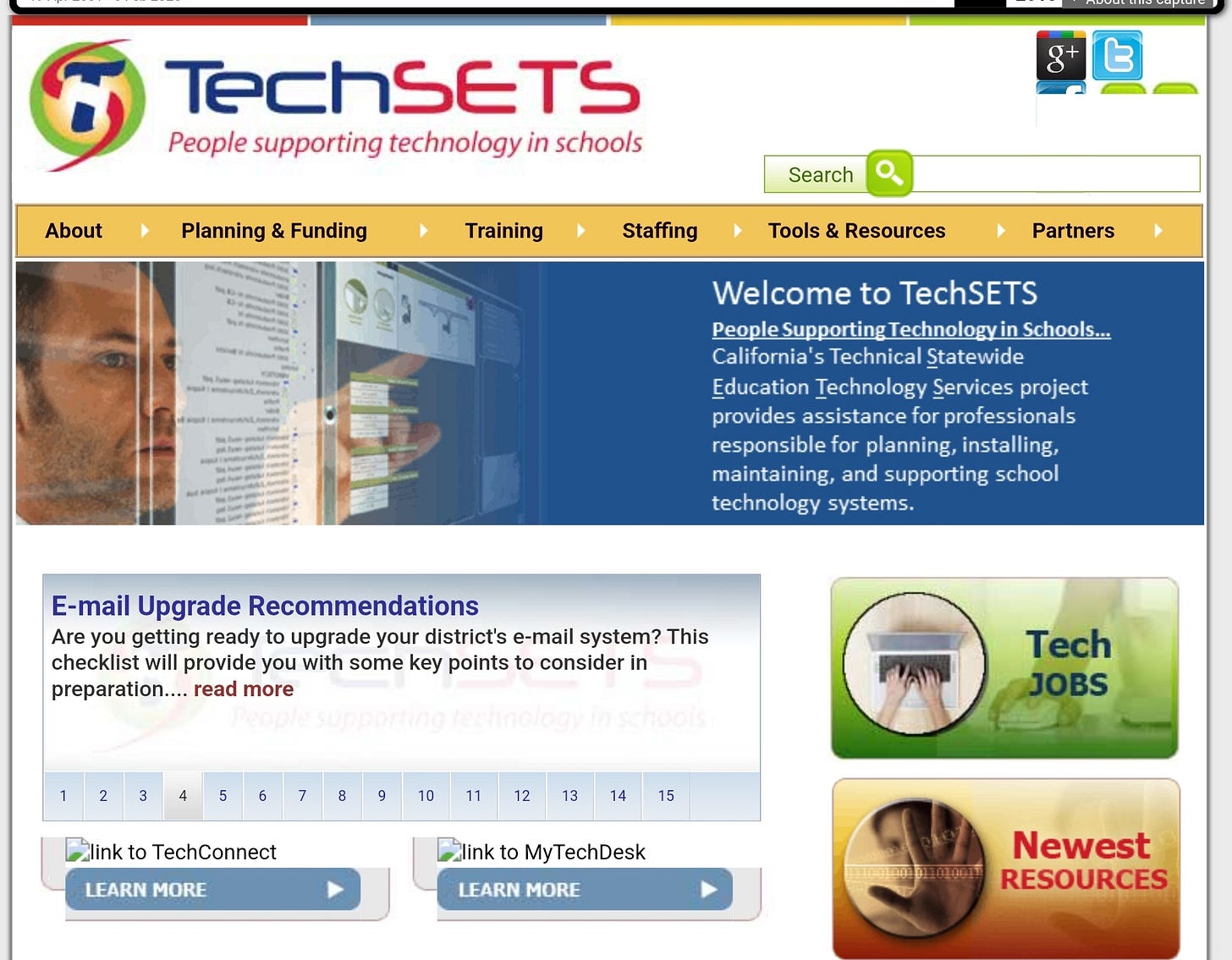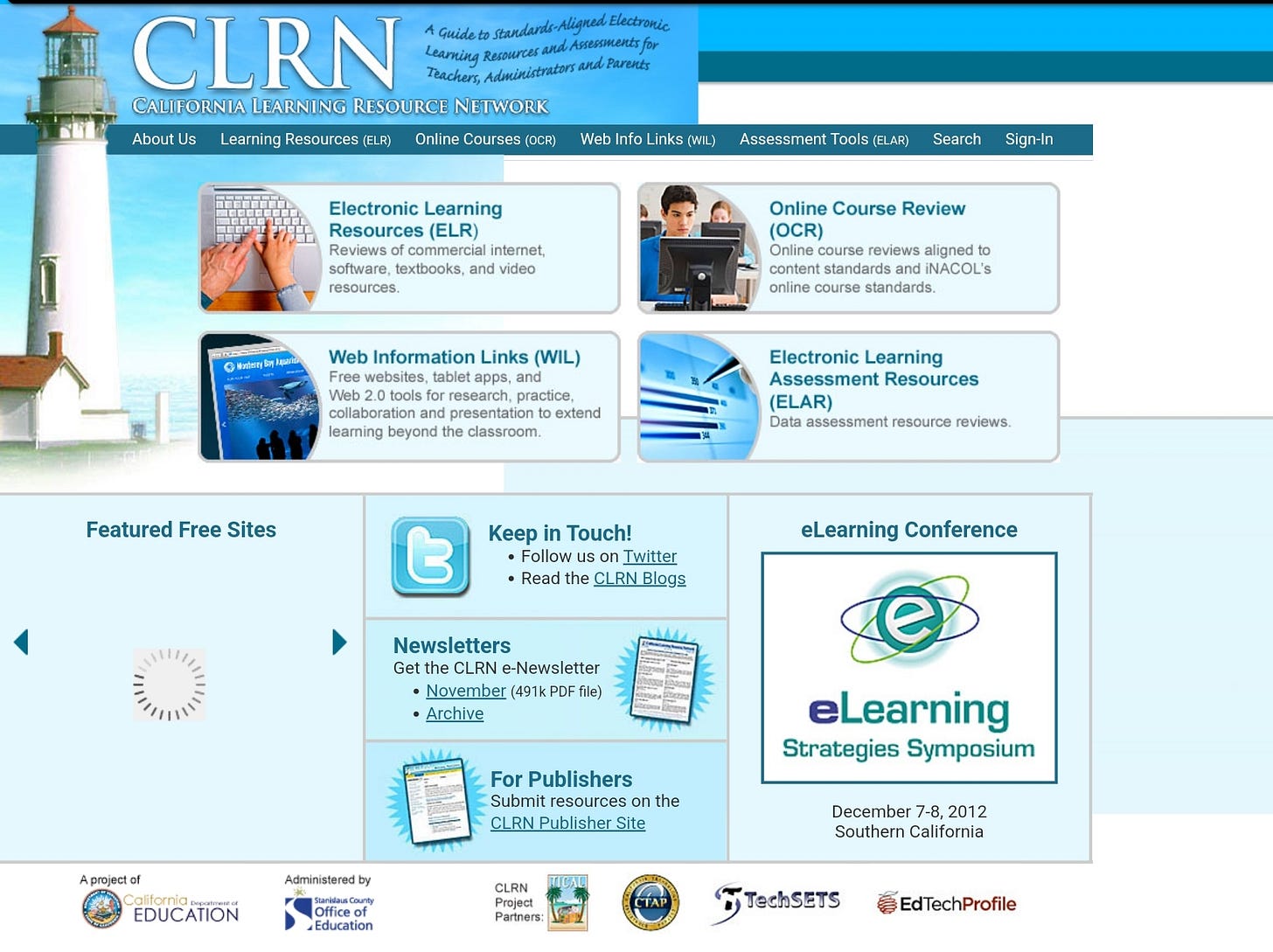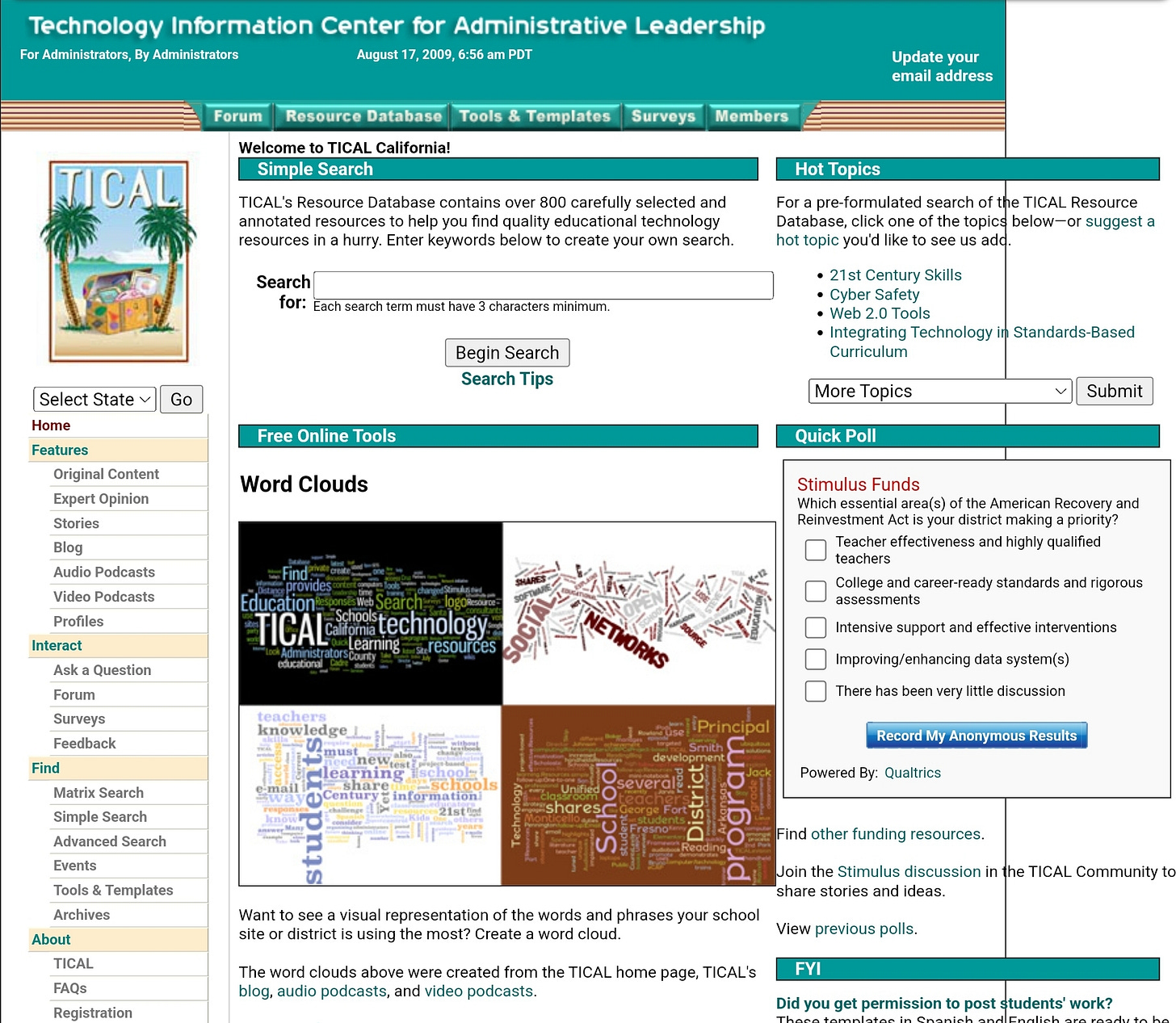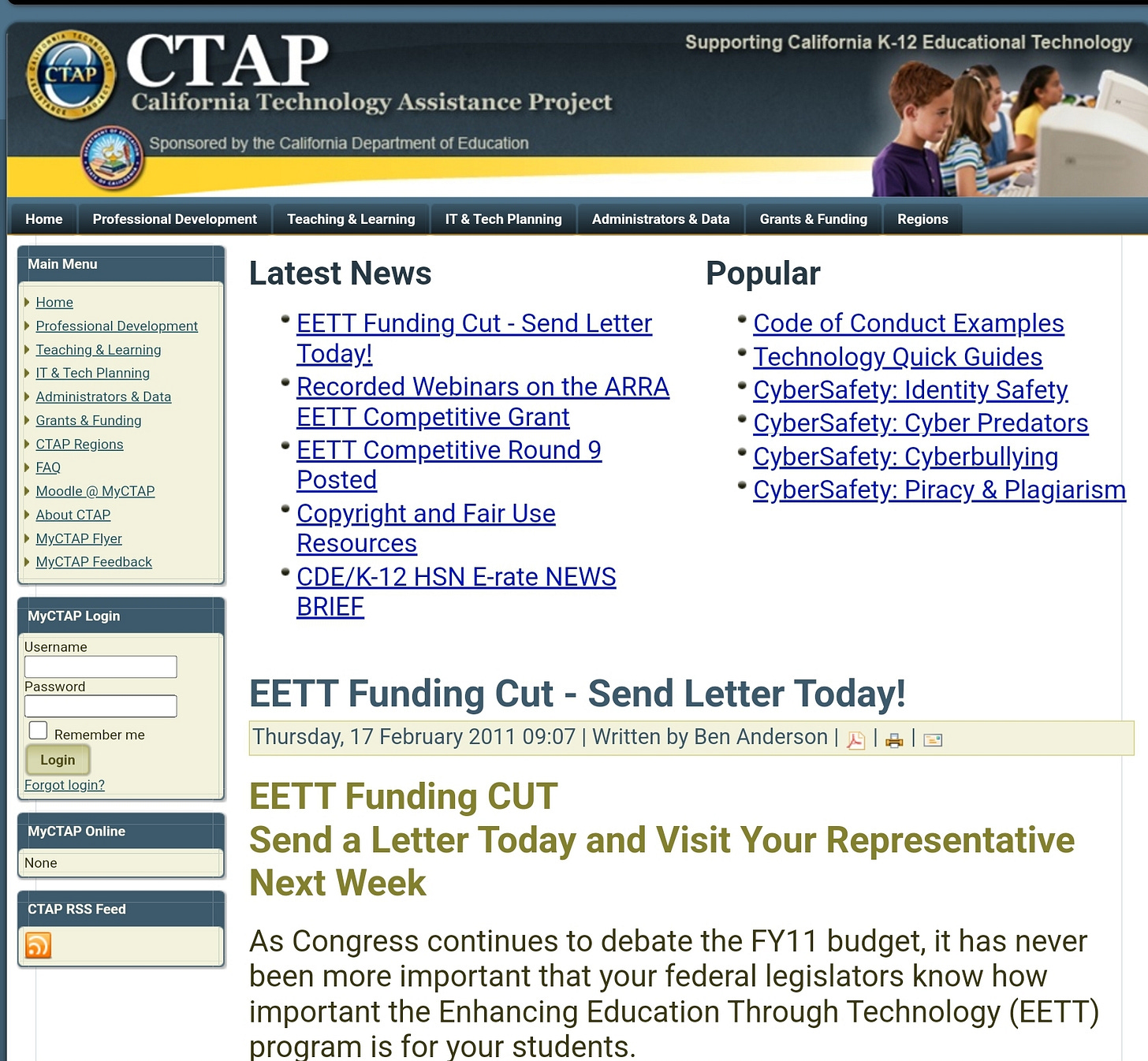I still remember the excitement in the 1980s and 1990s as computers first entered school classrooms. In the 80s, I was among 14 other students at Mark Keppel Elementary School that were the founding members of The Computer Club. The school had just gotten a computer lab set up, extraordinary for those days, filled with Apple IIe desktop devices. Club members could go hang out in the room with a teacher and learn the beginners all-purpose symbolic indication code, better known as BASIC, program language. In the '90s was when I first started using bots and chats and the internet and email.
But it wasn't until the early aughts when the Internet was widely accessible that educational technology was no longer just a dream; it was becoming a reality. It was during those formative decades that California spearheaded groundbreaking initiatives like CTAP, CLRN, TICAL, and TechSETS—projects dedicated to integrating technology into K–12 education. These programs paved the way for a generation of educators and administrators who realized the importance of technology in reshaping student learning. Little did we know that those early efforts would serve as the blueprint for the next great wave of innovation—our current Renaissance in artificial intelligence and digital learning.
As the former Director of TechSETS, I saw firsthand the transformation that occurs when educators and IT professionals receive dedicated support, training, and resources. TechSETS, in particular, was born out of a pressing need: the emerging world of hardware, networking, and cybersecurity was starting to overwhelm school districts. While CLRN focused on digital content and CTAP provided broader training to staff, TechSETS was the backbone that ensured servers ran smoothly, that online databases were secure, and that our educators and students could access technology without a hitch. The synergy among these projects was remarkable; everyone had a role to play, yet we all shared a common goal: to champion technology’s potential to improve education.
I remember countless phone calls and workshops where district IT staff—often overwhelmed with the day-to-day fires of maintaining an entire system—would look to TechSETS for support. We provided technical workshops, step-by-step guides, and troubleshooting sessions that built confidence and camaraderie. Just like a well-tuned machine, schools ran more smoothly when there was a reliable state-level resource to turn to for guidance. The deeper purpose of TechSETS, however, went beyond fixing computers; it empowered local IT administrators and educators to believe in what technology could do for student learning and creativity. This collective mission to enable and uplift was the greatest virtue of the entire network of California EdTech programs.
Today, I see a new era unfolding—one driven by artificial intelligence, machine learning, and data analytics. In many ways, this mirrors the enthusiasm and trepidation we felt in those early days of personal computers in classrooms. Once again, educators are asking questions about how to integrate powerful yet uncharted technologies into daily instruction. Once again, district administrators and IT staff need training, guidance, and a collaborative network of experts to ensure that AI tools are implemented ethically, securely, and effectively. Once again, we face a moment in history where we can shape the educational experience for generations to come.
I believe this is our new Techno Renaissance, one that calls for a renewed sense of purpose and vision similar to the projects we pioneered decades ago. The lessons we learned under TechSETS and its companion programs can guide us now: state-level coordination, specialized support, community-based training, and strong leadership at every level. AI promises much—personalized learning pathways, automated grading systems, data-informed instruction—but these innovations also bring challenges. Issues of bias, data privacy, and equitable access are no longer theoretical; they demand the same collective know-how and collaboration that we marshaled to bring computers into our schools in the first place.
Reflecting on the virtues of TechSETS, I see how its core mission—empower districts with the technical assistance they need—remains both timeless and timely. If we are to succeed in harnessing AI for the betterment of our students, we will need structured support from newly envisioned programs akin to TechSETS. We need specialized teams, professional development, and a shared repository of best practices. We need to create an atmosphere in which school IT staff, classroom teachers, and administrators feel confident in adopting AI tools because they know expert help is just a click or a call away.
In retrospect, all four of those pioneering projects—CLRN, CTAP, TICAL, and TechSETS—were able to flourish because they recognized the profoundly positive impact technology could have on teaching and learning. They also recognized the complexity of weaving new tools into the instructional fabric. It takes specialized guidance and a steadfast commitment. Today’s AI breakthroughs demand a similarly concerted effort. The world of K–12 education is once again brimming with potential—and the infrastructure, leadership, and collaborative spirit that characterized TechSETS and its sister programs can guide us toward responsible, transformative deployment of AI in the classroom.
I am proud of the legacy we built through TechSETS. Its success was grounded in a simple but powerful principle: empower educators and IT professionals with the knowledge and resources to navigate technological frontiers. As we navigate this new wave of technology—where AI can generate entire lesson plans, instantly analyze student data, and open up boundless avenues for personalization—my hope is that we will recommit ourselves to the core ideals that carried us through those early days of digital technology integration. By harnessing the same spirit of collaboration, expertise, and shared vision, we can ensure that this new Renaissance, too, becomes a glorious testament to the possibilities of educational technology.







